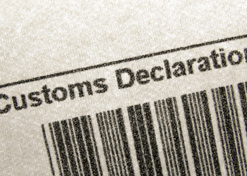In a recent judgment, Europe’s highest court in civil matters, the Court of Justice of the European Union (CJEU), expanded the scope of the EU Customs Regulation. It ruled that EU customs authorities have the power under the Regulation to seize and detain goods suspected of infringing intellectual property (‘IP’) rights where those goods have merely been sold by a non-EU importer to a consumer residing in the EU for private use. The goods need not have been offered to, or targeted at, EU consumers prior to the sale. The ruling is important for IP rights-holders as it gives them greater powers to intercept at EU borders private importations by consumers of infringing goods.
Background
The Customs Regulation (now replaced by a new Regulation) sets out a framework under which EU customs authorities can seize imported goods suspected of infringing IP rights in their member state. Infringing goods include goods which are ‘counterfeit’ (infringe trade mark rights), ‘pirated’ (infringe copyright) or which infringe any other IP right. It is usual for rights-holders to lodge details of their IP rights with the customs authorities who then keep a look out for, and seize, any goods that might infringe. If the importer does not consent to the destruction of the seized goods, the rights-holder must usually commence proceedings within ten days of the seizure for a ruling on whether the goods do indeed infringe in that member state. Infringing goods can be prevented from entering the country concerned and ultimately exported or destroyed. 
The case
Mr Blomqvist (B), a Danish national, ordered a watch described as a ‘Rolex’ from a Chinese online shop. The order was placed and paid for through the seller’s English website and the seller sent the watch to B from Hong Kong by post. The Danish customs authorities seized the watch suspecting it to be both counterfeit and pirated as infringing Rolex’s trade mark rights and copyright in Denmark. Rolex issued proceedings seeking to show that the watch infringed its IP rights and an order for destruction. B argued that the Regulation was not engaged in relation to the watch as he was not infringing any IP rights in Denmark. The Danish Supreme Court referred the case to the CJEU.
The ruling
The CJEU agreed that B was not infringing Rolex’s IP rights in Denmark. He had bought the watch for personal use and so there was no ‘distribution to the public’ (required for copyright infringement under the Copyright Directive) or ‘use in the course of trade’ (required for trade mark infringement under the Trade Marks Directive) by B in Denmark. However, the Chinese seller was infringing Rolex’s rights in Denmark. The mere sale of the goods to B was a ‘distribution to the public’. Furthermore, the mere fact of the sale meant that the goods could be considered to be counterfeit or pirated (until proved otherwise). It was irrelevant that the goods had not been offered to, or targeted at, EU consumers prior to the sale. This meant that the Customs Regulation, together with its seizure and destruction procedures, was engaged in relation to B’s watch.
Implications
The ruling is good news for IP rights-holders, like Rolex. It means they can use the Customs Regulation to intercept at EU borders goods suspected of infringing their rights which are sold online from outside the EU to an EU consumer, even where the website is not targeted at EU consumers. This expands the scope of the Customs Regulation to cover private importations.
The judgment highlights how the Customs Regulation can be a useful tool for rights-holders in the battle against imported counterfeit and pirated goods. However, some rights-holders might not be aware of how the Customs Regulation can help them, or may not be using the Regulation to its fullest extent. Squire Patton Boggs has a team of brand protection experts who advise on anti-counterfeiting and brand protection issues, including how to partner effectively with customs authorities.

